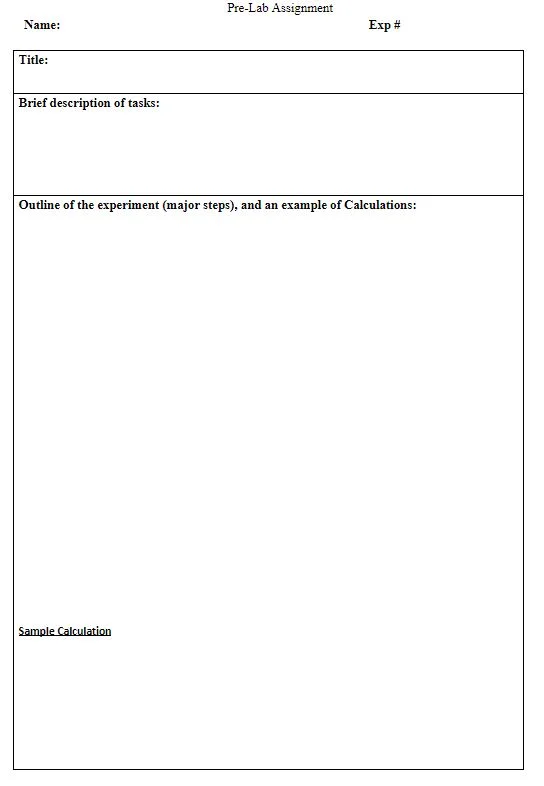Disclosure: This page may contain affiliate links that earn this website a small commission, at no cost to you.
General Chemistry I Lab (CHEM 1111 - Fundamentals of Chemistry Laboratory) covers general principles and concepts by use of qualitative and quantitative experiments, emphasizing interpretation and reporting of data and facility in handling scientific instruments as described by the UH catalog. This course is required for many science majors and pre-health students. Although this lab only awards 1 credit hour, the amount of time and effort to do well in this course may be disproportionately more than you expect.
Here you will find what to expect on the first day of lab, mock quizzes designed from past quizzes, and guides to every experiment covered. This includes the overview, pre-lab, datasheet, and postlab questions. Remember, labs may be modified or changed from semester to semester, and material provided here is only meant to be a guide.
What you need
Below are items you will need for lab. These items can be bought on campus. However, you may find these cheaper on sites like Amazon. Included are Amazon links to these or similar items.
CALCULATOR (LINK)
A scientific calculator is needed for calculations on quizzes. Some labs have calculations that need to be turned in before leaving.
Lab goggles (link)
Required eye protection. Must be worn at the start of the experiment and until leaving.
Combination Lock (link)
A combination lock is required to lock your equipment drawer for the semester.
Lab coat (link)
A lab coat is required and must be worn once lab begins.
lab manual (link)
Specifically, General Chemistry Laboratories A Freshman Workbook. The lab manual will have all the experiment procedures you will be performing during the semester including their respective datasheet and postlab questions.
Graph paper (link)
You may need graph paper depending on your TA. Some TAs require you graph on graph paper instead of using software.
What to expect
Lab is a different animal. You must utilize knowledge to understand what to expect and then do actual experiments that may or may not yield those expected results. You are then give a reasonable explanation to why they were or were not what you expected. Here are some things to know or look out for.
Bottlenecks
Many experiments are limited by equipment availability. This will prevent you from moving on. Because of this, it is essential to read the procedure ahead of time, understand what you’re doing, and identify parts that may be potential bottlenecks. This will enable you to finish the experiment efficiently and give you more time to ask questions regarding the post-lab or calculations. For each experiment, we have provided some bottlenecks you may encounter and ways to work around them. This can be found in the EXPERIMENTS section.
Grading
Labs are known to curve based on the average of the section compared to the overall average of all sections. This means that if your TA grades you harder and results in a lower average, your lab section may receive a curve to makeup for the difference. Lab only awards 1 credit hour, but you may find that the amount of work required for an A is much higher than many lecture courses.
Try to maximize your grade by getting full points in areas that are “freebees”. Lab reports/assignments (pre-lab, datasheet, postlab) are generally consistent. That is, students usually score in a predictable range. Quizzes, however, are where scores vary widely and can be the determining factor for your final grade. You can find both the EXPERIMENTS (link) and QUIZZES (link) sections in the resource section of this page.











